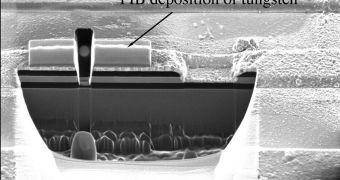The history of aviation, though short (only a bit more than a century) has known the greatest advances in terms of design technology, building materials and performances of civilian and military aircraft. The first planes were made of wood, cardboard and cloth, now they are built using the latest development in artificial fibers, polymers and nanotechnology.
Space is the most recent field where nanotechnology has found successful applications. NASA successfully tested the first electronic device based on nanotechnology. The nanosensor is the first of a new generation designed to monitor trace gases inside a spaceship, and could one day lead to smaller, more capable environmental monitors and smoke detectors in future crew habitats.
On March 9, 2007, NASA launched the Nano ChemSensor Unit on the rocket that propelled the U.S. Naval Academy's MidSTAR-1 satellite into space, and was powered up on May 24, with promising results.
"The nanosensor worked successfully in space," said Jing Li, a scientist at NASA's Ames Research Center in California's Silicon Valley. Li is the principal investigator for the test. "We demonstrated that nanosensors can survive in space conditions and the extreme vibrations and gravity change that occur during launch," she said.
Used to detect harmful chemical contaminants that could gradually accumulate in the crew's air supply, the sensor is made of carbon nanotubes coated with sensing materials, designed to operate under the conditions of space.
It will able to detect minute amounts of these contaminants and alert the crew that there may be a problem, while successfully enduring microgravity, heat and cosmic radiation in space. All of this endurance was built in a structure less than half an inch across, packed with 32 nanosensors, that were able to detect nitrogen gas, like the one in the atmosphere, but containing 20 parts per million of nitrogen dioxide was injected into a small chamber.
NASA was pleased with the functioning of the tiny sensors, so the road is open for nanotechnology to further improve space age applications.

 14 DAY TRIAL //
14 DAY TRIAL //